How to Buy the Best Sleeping Bag

- Find expert tips to help you get a good night’s sleep
- Picking the right sleeping pad, bag liner, pillow or cot
- How to minimize smelly sleeping bag odor
To get a good night’s sleep in the cold, bring a tent suited for potential weather conditions, including winds or snow load. Pack an insulated sleeping pad or two, and bring a sleeping bag that will keep you warm.
KNOW YOUR BODY
If you are always wearing a T-shirt in camp when others are wearing a fleece — and you’re not cold — get a bag rated about 10 degrees lower than the lowest temperatures you encounter on trips. If you’re one of the first people to put on an insulated jacket while hanging around camp, get a bag rated 20-25 degrees lower than the coldest nights you anticipate.
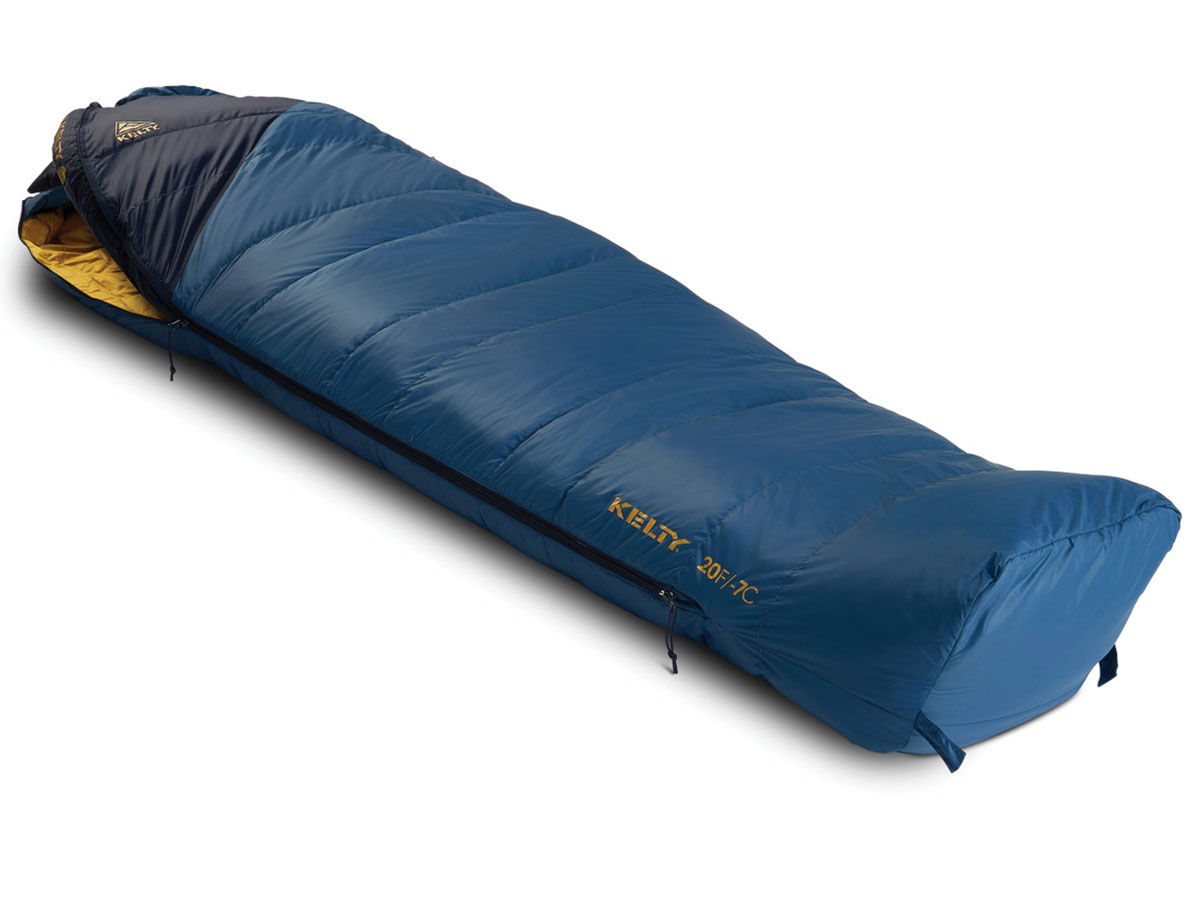
Looking for a versatile bag for autumn, winter and spring that you can layer up inside when you push the bag’s temperature limit? We recommend KELTY’S COSMIC DOWN 20° ($150, kelty.com). In many locations, a 20-degree bag can be used year-round, and while you might have to unzip it in summer or cinch it down and sleep in layers of clothing in cold temps, it’s about as versatile a bag as you can buy. It’s trim with trapezoids-shaped baffles and a big footbox that makes the bag feel less confining. It’s made from fully recycled fabrics with a planet-safe, water-repellent coating. And we loved the zippered stash pocket.
KNOW YOUR BUDGET
Prices vary depending on factors like type and quality of insulation, as well as materials used. For instance, a bag rated to zero degrees uses much more insulation than a 30-degree bag.
TEMPERATURE RATINGS
Sleeping bag temperature ratings aren’t usually accurate, says Steve Lutz, a designer for Alps Mountaineering and a Scouter who has taken Scouting America’s cold-weather leader training.
“If it’s zero degrees when you camp, you won’t suffer harm in a zero-degree bag, but you’ll likely be a lot more comfortable in a negative-20-degree bag,” says Lutz.
Most sleeping bags are rated for the extreme temperature you can use them in. Some also list a comfort rating. Get a bag rated for colder temperatures than you expect. And whatever bag you choose, always travel with extra layers you can sleep in if you’re cold, including a down jacket and fleece or insulated pants.
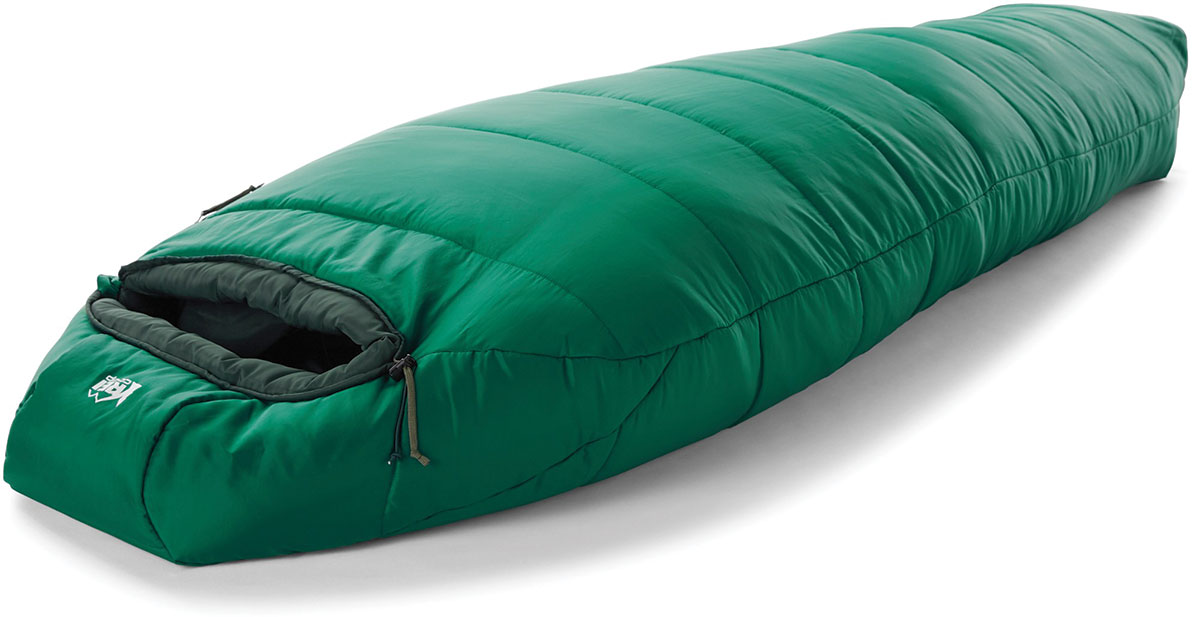
If it’s well below freezing, REI’S FROSTBREAK 5° ($140, rei.com) is a great choice. It uses four layers of synthetic offset insulation to prevent cold spots and has double draw cords so you can adjust the hood and neck separately. The external stash pocket is perfect for a headlamp. And because this bag also comes in short, regular and long, it fits everyone.
SYNTHETIC VS. DOWN INSULATION
Winter sleeping bags are insulated with either goose down or a polyester synthetic. Both trap air warmed by your body and form a protective insulating envelope around you. Down is warmer by weight, packs smaller than synthetic and is almost always more expensive. Some down is treated to repel moisture, but in general, when down gets wet, it loses its air pockets and ability to insulate.
Synthetic insulation is warm even if it gets damp, but many people think it doesn’t feel as good to sleep in as down. Most synthetic insulated bags are more affordable than down ones. When temperature ratings are equal, higher-quality insulation is always lighter.
WEIGHT
This matters when you’re backpacking, but less so when car camping.
Lighter, higher-quality insulation costs more, but you can also reduce weight and bulk by not buying a 15-degree bag when you need only a 30-degree bag.
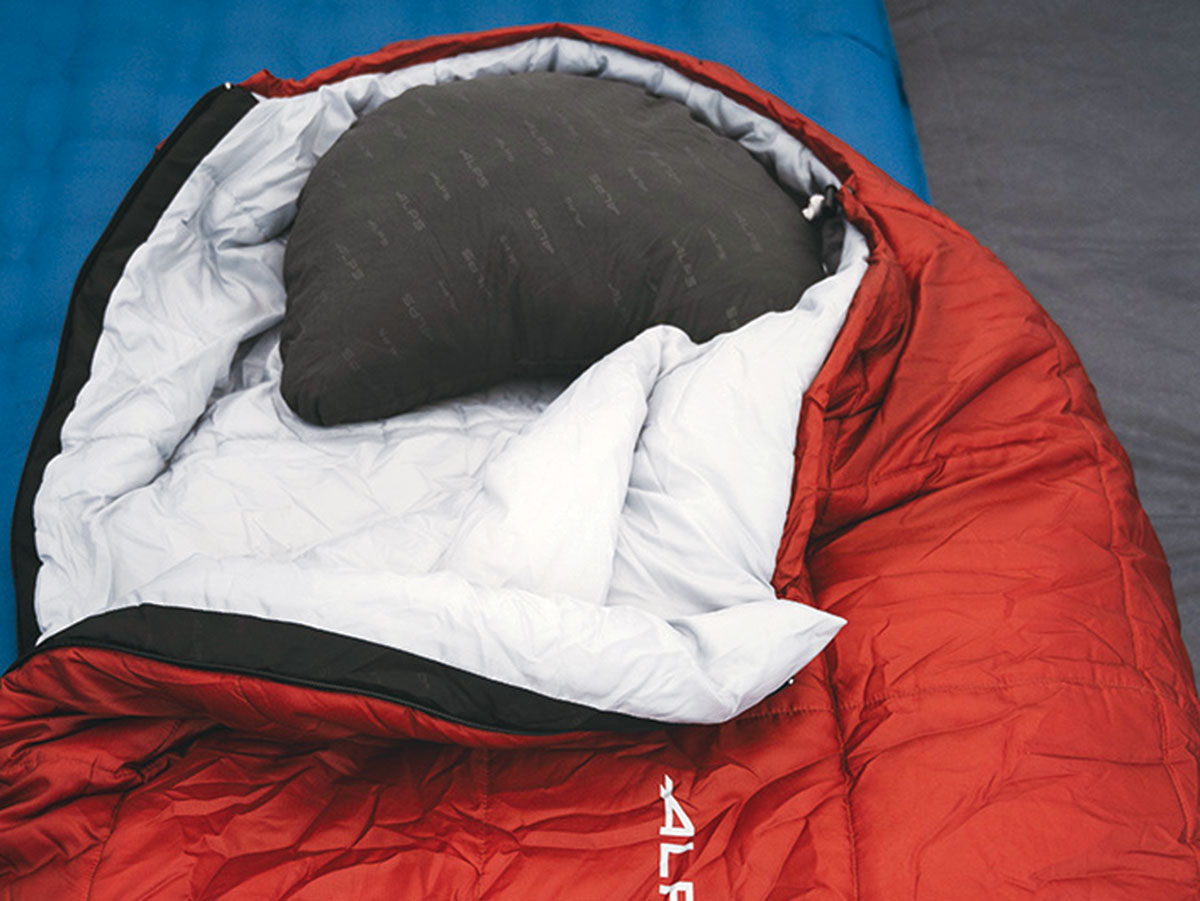
One of the most affordable true winter sleeping bags you can buy, ALPS MOUNTAINEERING’S VIBE 0º ($120, alpsmountaineering.com) has a spacious cut and neck and zipper draft collars. The synthetic insulation is offset to prevent cold spots. The bag is basic, but the price is right, which makes it great for anyone interested in trying winter camping. It comes in regular and long sizes.
MUMMY VS. RECTANGULAR SHAPE
The snugger a sleeping bag fits, the less air you have to heat, and the warmer you’ll be. A mummy-shaped bag is often trimmer. But if you’re a side sleeper or you flip-flop during the night, a mummy may feel restrictive. More affordable bags are often cut large unless they’re specifically for youth.
SLEEPING BAG FEATURES
When you’re camping in cold weather, a draft collar around the hood of your sleeping bag and a draft tube along the inside zipper will keep your body heat inside. If your sleeping bag doesn’t have a hood, wear a warm hat or fleecy buff, and cinch the top of the bag to stay warm.
An easy-to-reach internal or external pocket is a great place to store a headlamp. Two way zippers or vents make a cold-weather bag more versatile because they allow you to adjust your temperature.
Whichever sleeping bag you buy, consider upgrading the compression stuff sack to one that’s lighter and easier to compress than the one the bag came with.
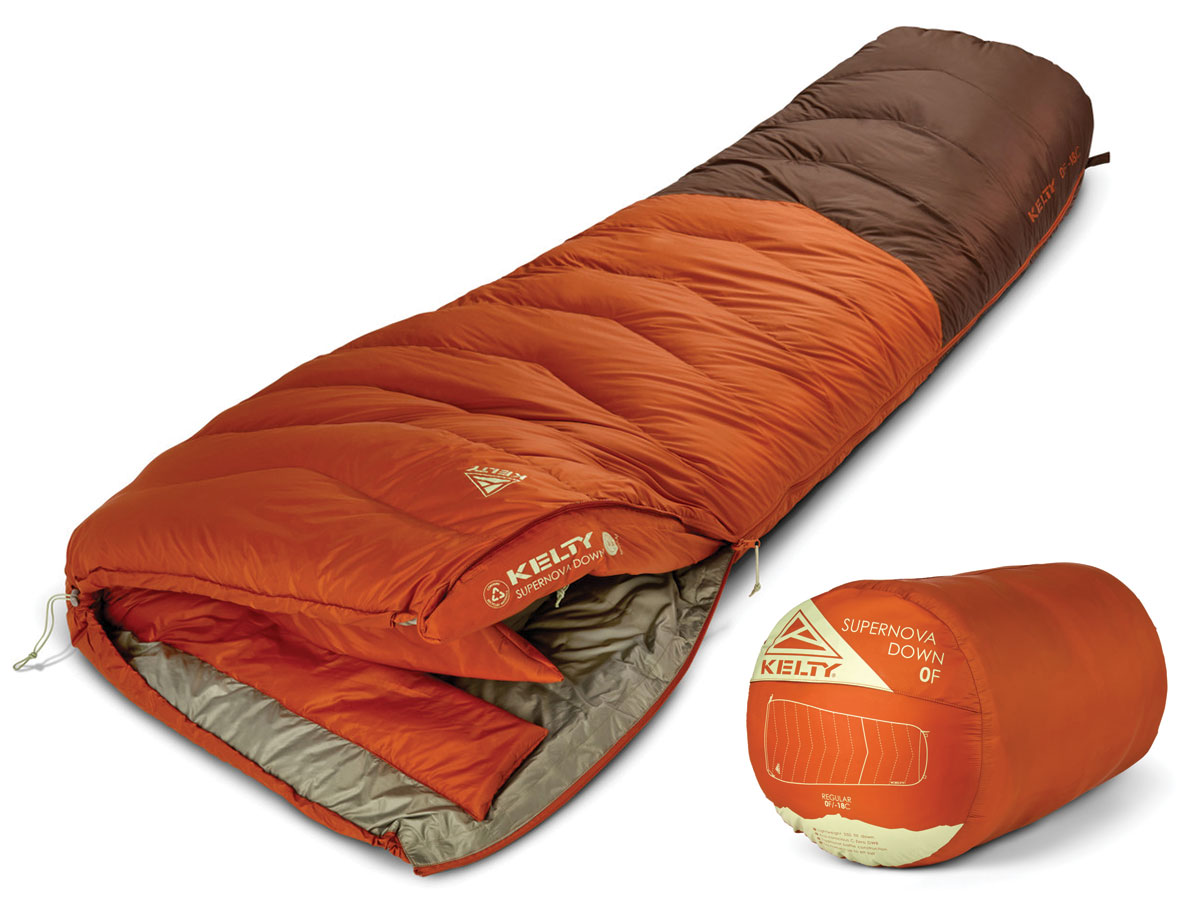
Kelty’s semi-rectangular SUPERNOVA DOWN 0° ($250, kelty.com) bag uses 550-fill-power down to keep you warm on winter adventures. The bag has a spacious cut with a 270-degree zipper so you can unzip it flat and use it as a blanket when it’s warmer out. The Supernova Down has a full draft tube and collar, but it doesn’t have a hood.
GEAR GUY’S ADVICE?
Get what you can afford. With an inexpensive bag, you can still get outdoors, which is what’s most important, right? If and when you have the dough for a nicer bag, it will make your wilderness adventures a little more luxurious.
CARING FOR YOUR BAG
Properly cared for, a sleeping bag can last 10-20 years. Body oils can compromise insulation, so to prolong your bag’s life, you should sleep in clean base layers. Air out your bag after each night of camping, but don’t leave it exposed to sunlight for long periods.
Post-trip, hang the bag to dry for a day or two, and then place it in a big storage sack or an old pillowcase. Be sure to store it in a dry place. If your bag gets really dirty or starts losing loft, follow the manufacturer instructions for washing it.
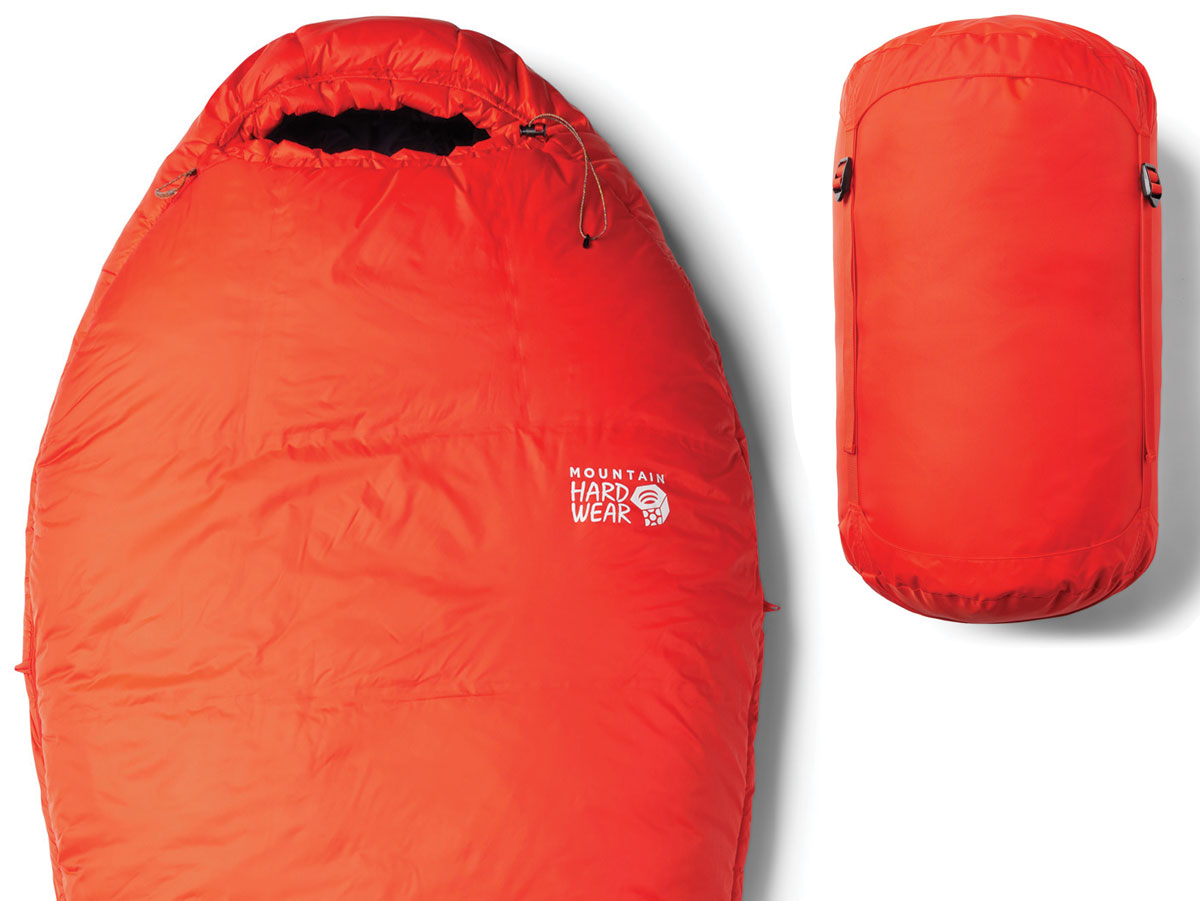
For deep winter camping, we like MOUNTAIN HARDWEAR’S LAMINA -20°F ($310, mountainhardwear.com). Seamless construction prevents cold spots and keeps the loft in the synthetic insulation. The light, compressible, water-repelling shell feels silky and makes this bag 15% lighter than previous versions. It comes with left or right zippers in regular and long sizes with a spacious storage sack and a compression stuff sack.
WINTER HACKS FOR STAYING WARM
Here are a few winter hacks for staying warm:
Always use an insulated sleeping pad. Fill a Nalgene bottle with boiled water right before bed. Slide the bottle inside a sock, and put it inside your sleeping bag. That kick-starts the warming process when you first climb into your bag. Lutz also recommends changing into clean, dry clothing before zipping up for the night.
“As you hike, your clothes absorb moisture,” Lutz says. “If you get in your sleeping bag without changing, you risk making your bag damp, which is uncomfortable. Hang your dirty clothes and boots in a tent vestibule to dry.”
this was very helpful, i got a marmot sawtooth that is rated to 15 degrees, but it will keep you snug and warm at -30 degrees if you wear a hat.
Campmor sells a house brand down mummy sleeping bag that is a steal. Its rated at 20 degrees but it is probably more like 30. 120 bucks for a 550-fill down bag.
I agree with Ultimate Scoutmaster, you need to go more to the cold side vs getting a warmer bag. Always remember head gear, the times I have been most uncomfortable, I have forgotten my beanie when sleeping in colder weather.
my neighbor gave me a really warm and small blanket for camping that gos under 0 degrees.he made my day!
I have one but the zip broke off and it is a good one.
I am going to Philmont this summer and I realized while going through my gear that my sleeping bag is heavy and compresses to the size of yoga ball (around a yard on the side). I need a good stuff sack that is light weight, that compresses really small, and will keep me warm on Mt. Baldy. Which brand should I get and what model?
i have a negative 15 degree from Dick’s. got it for 50$ then used a ten dollar coupon!
paid as much as a 40 degree costs!!!!!!!!!
I’ve got a NorthFace sleeping bag – minus 20 degrees and it keeps me warm. Weighs about 1.5 lbs and condenses to the size of a soccer ball with a compression bag.
I like Coleman sleeping bags.
quest makes good sleeping bags